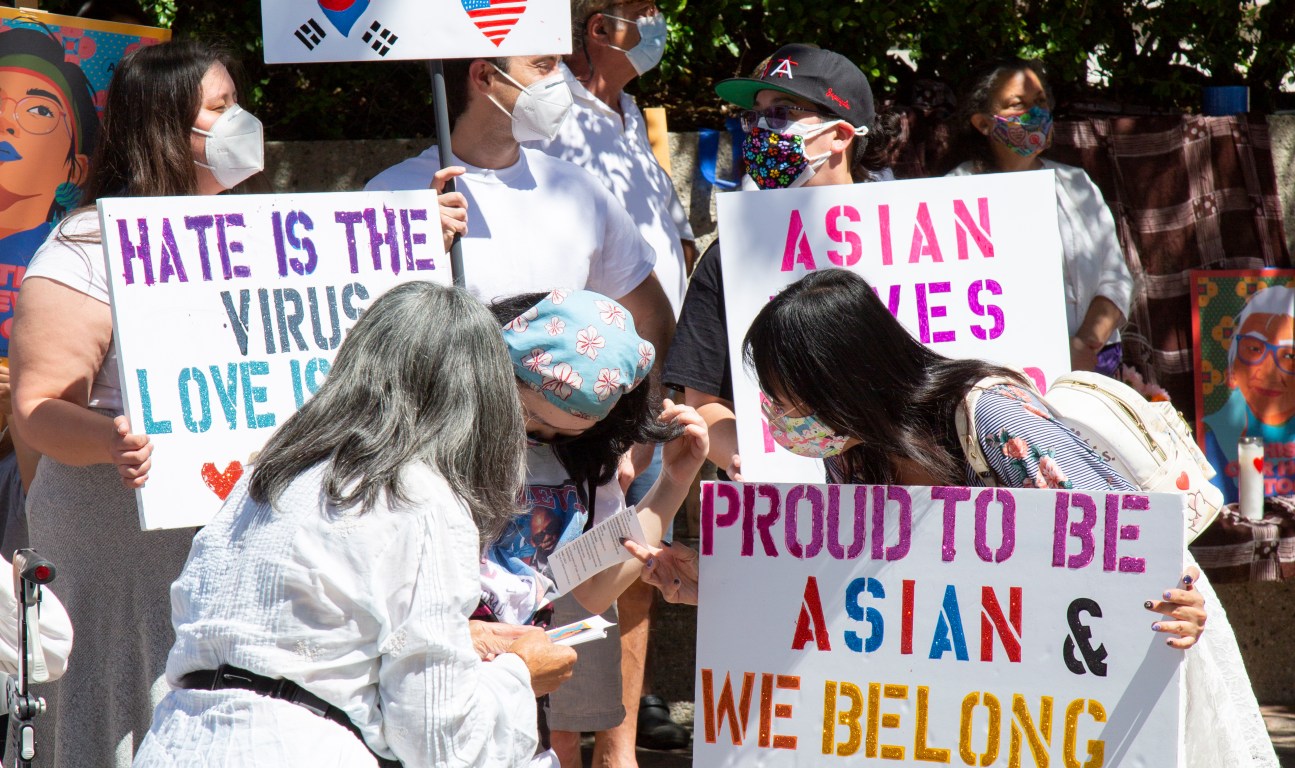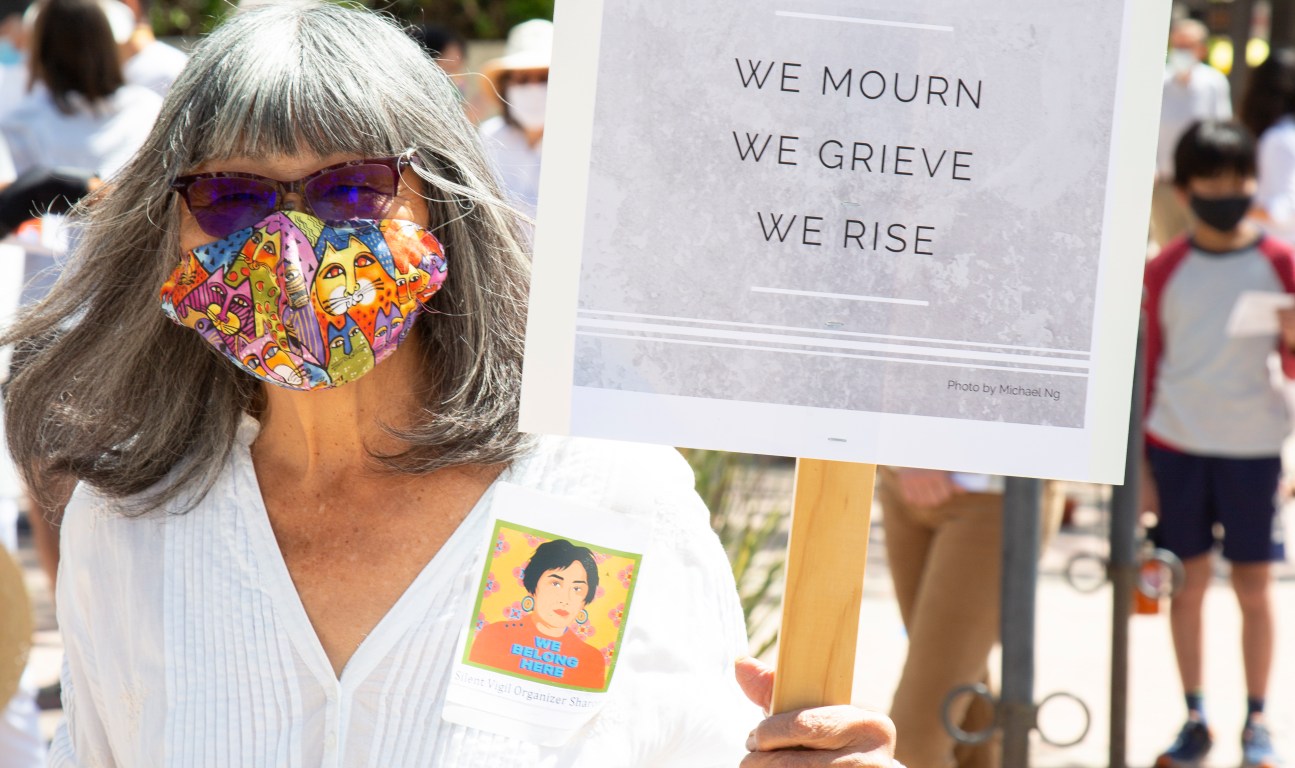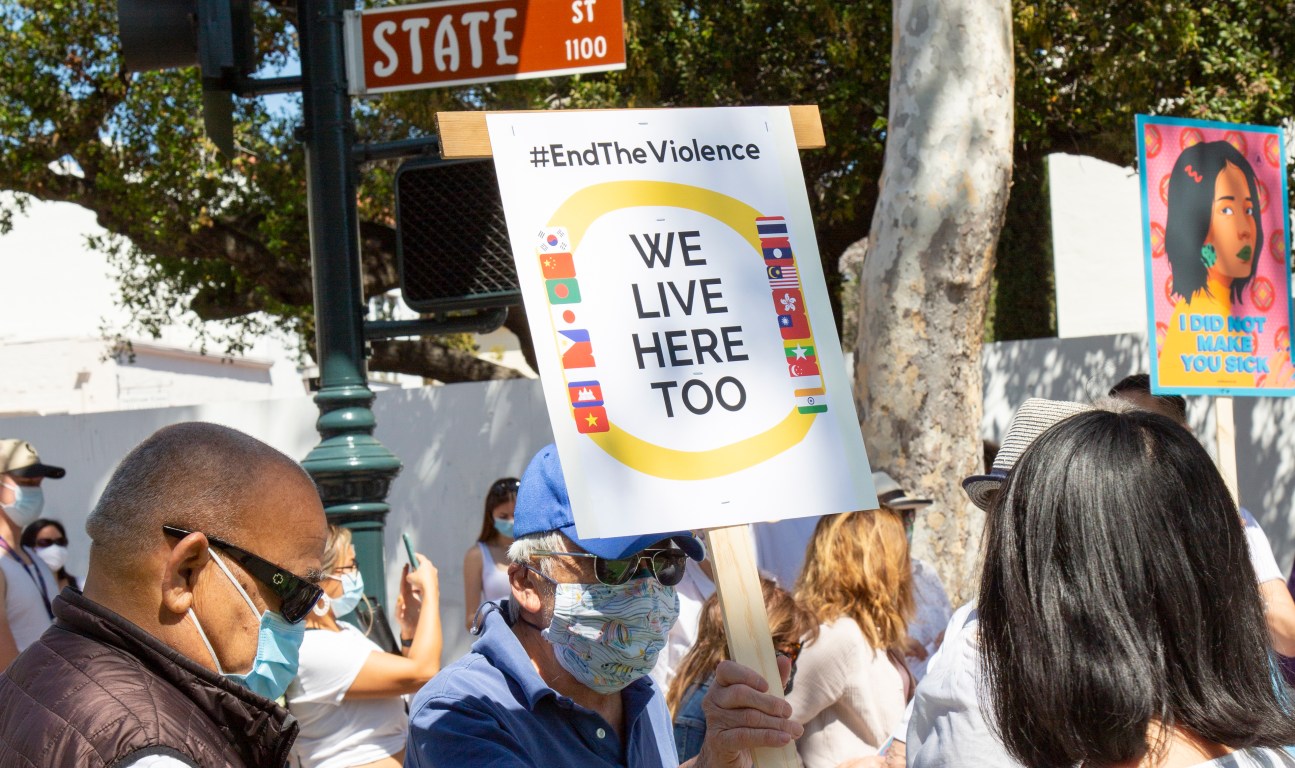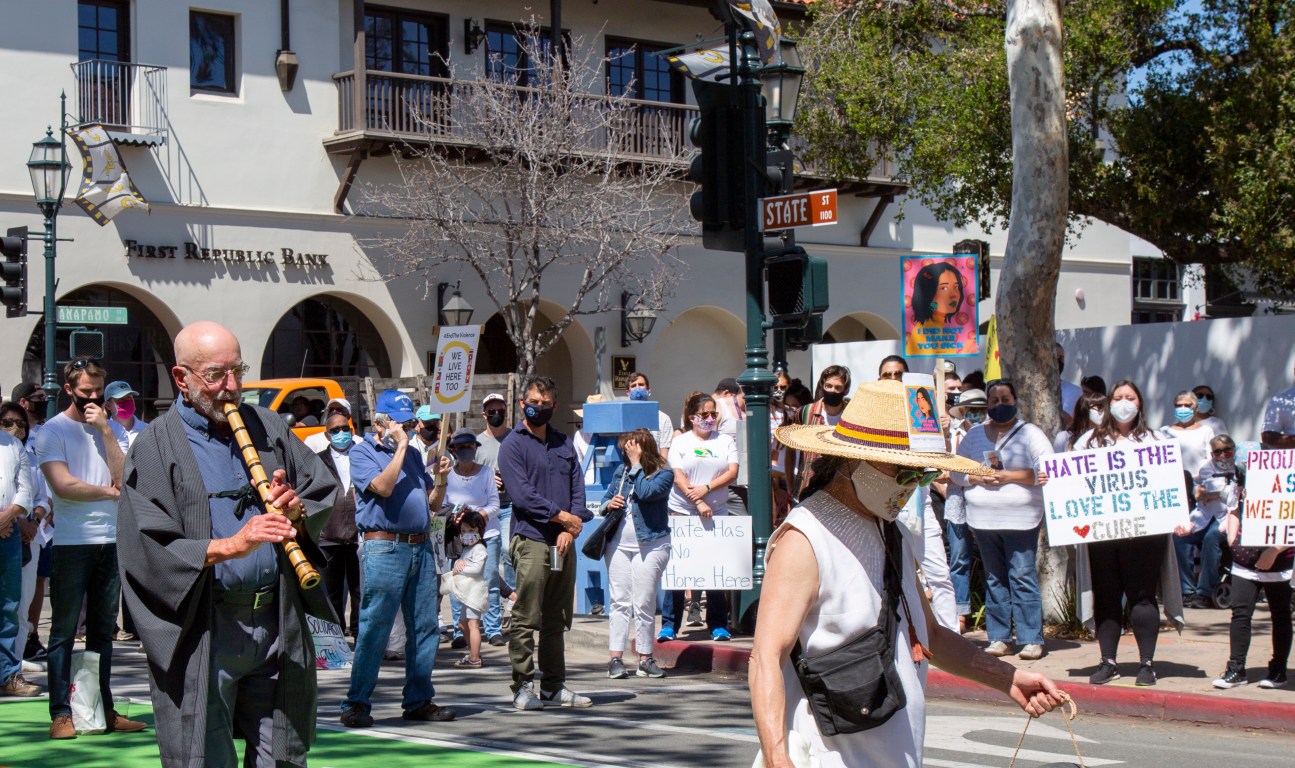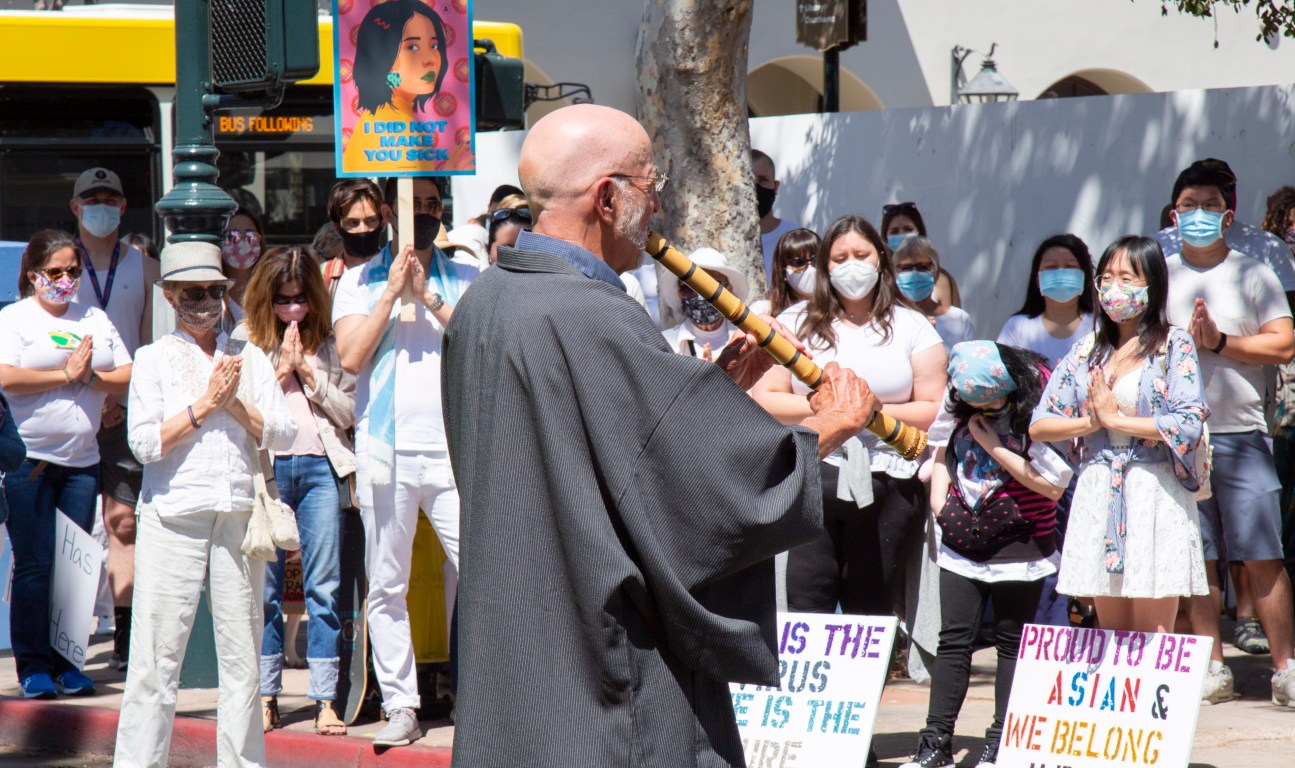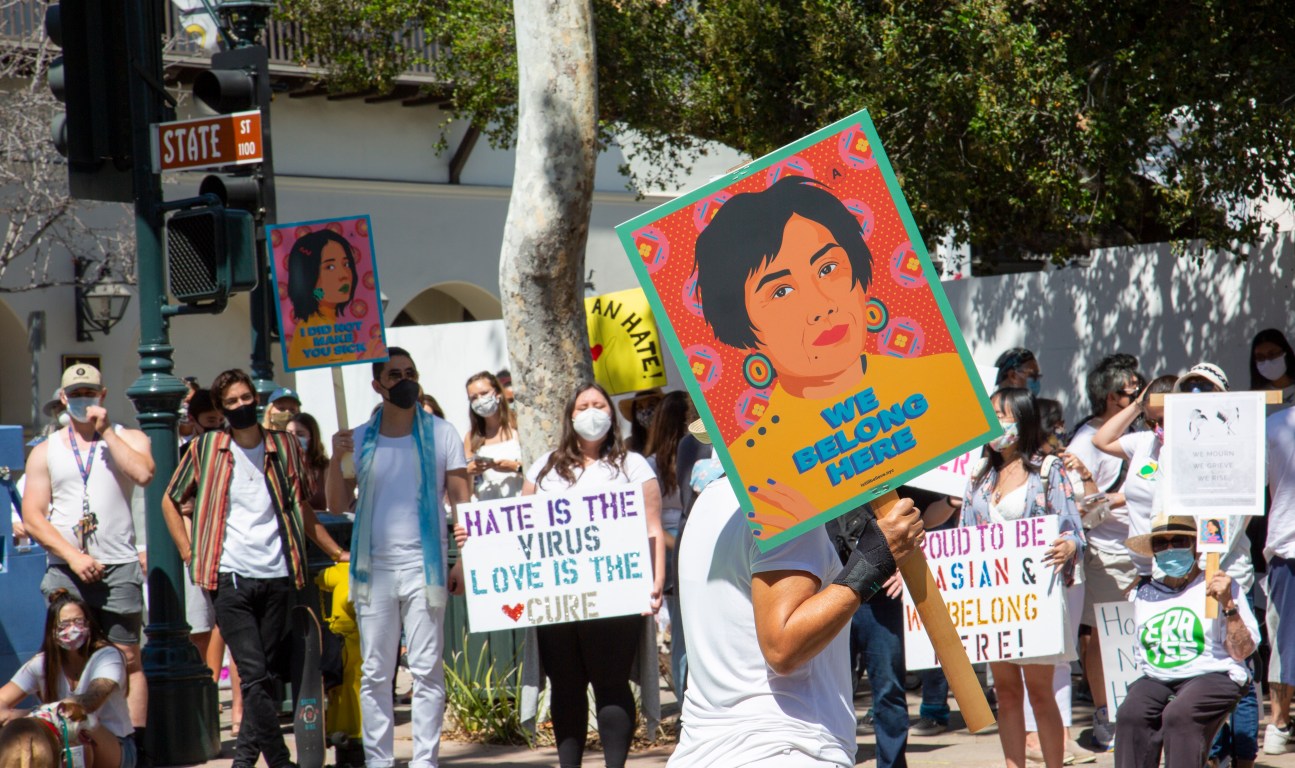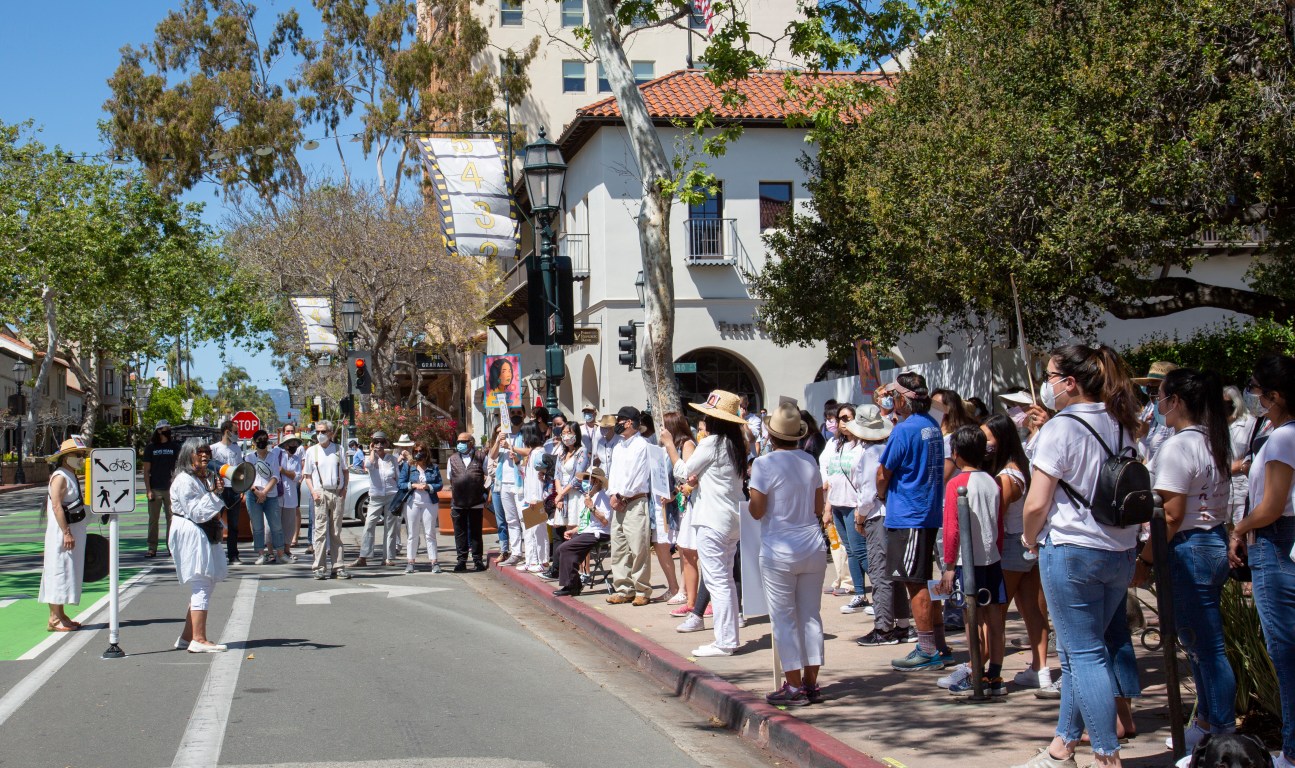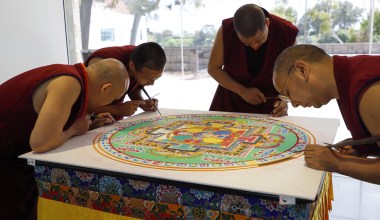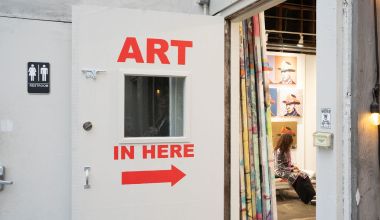A group of people who traditionally retire to the background of public life came out in force on Saturday afternoon to hold a vigil in protest of violence against Asians in the U.S., in particular the six women of Asian descent shot to death in Georgia on March 16. Nearly 300 people assembled on the corner of State and Anapamu streets in downtown Santa Barbara, at a spot known as “Speaker’s Corner,” though no speeches were made. The silent crowd instead created a powerful presence of solidarity and solace, forming a crescent in the shade of the overhanging sycamores and clothed in white, the color of mourning in some Asian countries.
The four organizers — Sharon Hoshida, Juliet Velarde Betita, Karena Jew, and Judy Guillermo-Newton — reflect to a small degree the large part of the world known as Asia, their parents and grandparents coming from Japan, the Philippines, and China. Joining them were Indian Americans, Vietnamese Americans, Thai Americans, and more members of the Asian community, as well as other Santa Barbarans allied in sorrow over the killings and the thousands of assaults against Asians and Asian Americans since the beginning of the pandemic and Donald Trump’s repeated conflation of a health crisis with a divisive brand of politics as he named COVID-19 the “China virus” or the “kung flu” to jeering crowds of fans.
An invitation to the vigil went to church groups and to workers at restaurants, massage businesses, and nail salons, about 100 of whom attended, joined by another couple hundred people, many from community activist groups. One of the few audible parts of the vigil was a vibrating gong, struck by Betita, and a shakuhachi bamboo flute, played by Komuso monk Bob Nyosui Sedivy, sounds that organizers intended to bring focus to inner stillness and emotion, while the flute echoed the cries and weeping of loss.
Holding a vigil that was quiet was a deliberate choice to stay in keeping with the community’s preference. “The Asian American and Pacific Island communities have been invisible as a way to deal with hate,” the organizers said in a written statement, “which implies staying out of harm’s way.” But the two-hour vigil also allowed them to be visible rather than invisible, Betita added. “We’ve grown up with a history, for example, of no one talking about the internment camps for Japanese Americans,” she said. “We see people on videos talking about their experiences, but kids never got information from their parents.” A much more vocal generation was already on college campuses, she noted with approval, and younger students learned about the prison camps in ethnic study programs.
“The United States had laws that didn’t permit Asians to be part of the culture,” Betita reminded, referring to the Page Law of 1875, a precursor to the Chinese exclusion laws of the 1880s. “Chinese women couldn’t come into the country, under suspicion of being brought in for illegal businesses like prostitution.” At least that’s what the law stated, she noted; it was also a means to prevent birthright citizenship from going to any child born of Chinese parents in the U.S.
Betita, who is a marriage and family counselor, continued: “They still see us as exotic and erotic. That’s information that just keeps getting carried on.” The eight people murdered in Georgia, all but one of whom were women, were killed in massage parlors in Atlanta and in nearby Cherokee County by Robert Aaron Long, 21, who claimed he was eliminating a “temptation” for his “sexual addiction.”
Silence may have protected the Asian community at one time, but the vigil organizers said the community had been shaken by the deaths in Georgia, concluding there was a greater need for civic and political engagement. “We came together to change this,” the four women said, “and to make silence a symbol protesting hate.”
Correction: The Chinese Exclusion Act, signed in 1882, was preceded by the Page Law of 1875, whose main target was the exclusion of Chinese women.

